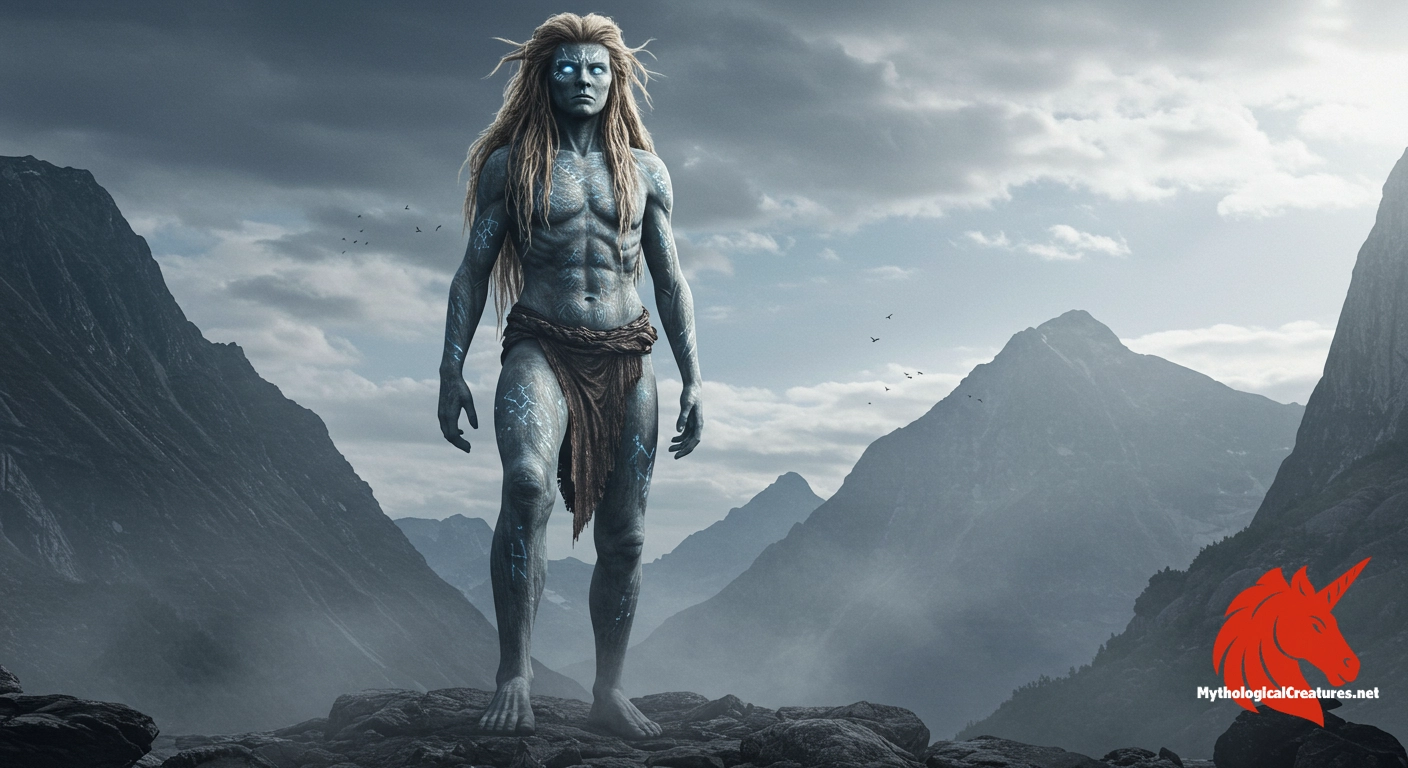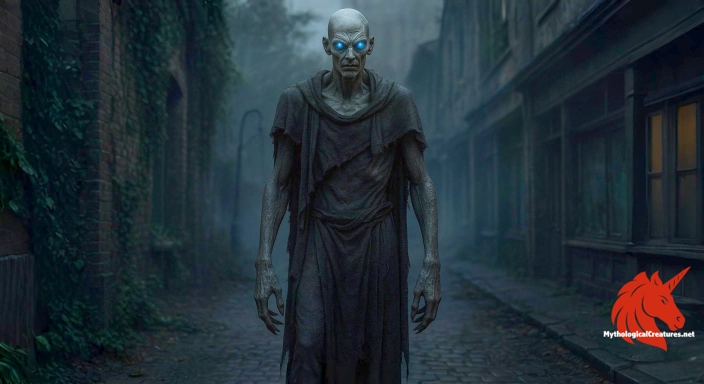Gríðr: Gríðr is a jötunn in Norse mythology known for her role as the consort of Odin and the mother of Víðarr.

Gríðr
Gríðr - Gríðr is significant as a jötunn who, through her role as Odin’s consort and the mother of Víðarr, embodies the intricate and often dualistic relationships between the gods and the giants in Norse mythology.
Origins & First Encounters
Gríðr emerges from the extensive corpus of Norse mythology as a formidable jötunn whose presence is both enigmatic and influential. Her origins lie within the intricate interplay of divine and giant forces that characterise the mythic narratives of the North. Although early attestations of her are brief, her connection as the consort of Odin and the mother of Víðarr the Silent implies a deep significance in the broader cosmology. She is woven into the fabric of a mythological tradition that blurs the lines between chaos and order, reflecting the complex dynamics between gods and giants. The sparse but potent references to her in ancient texts have sparked enduring debates among scholars and enthusiasts alike. Gríðr’s role underscores the notion that even the lesser-documented figures in Norse lore can wield considerable influence in shaping mythic tradition. The enigmatic nature of her character invites further reflection on the connections between divine ancestry and the untamed forces of nature. As such, her legacy continues to resonate in both scholarly examinations and modern reinterpretations of Norse myth.
Source Texts & Tale Variants
The literary trail of Gríðr is traced through a handful of ancient texts and poetic fragments, where her name surfaces amidst the revered tales of the Norse world. References in the Prose Edda hint at her importance as part of the intricate network surrounding the chief deity, Odin. Although explicit narratives about her are few, the interwoven nature of Norse myth ensures that even modest mentions contribute to an elusive yet compelling story. Variants in her name, such as Gríd, suggest a fluidity in oral tradition and textual transmission that is common among these ancient sources. Skaldic poetry and later saga traditions have occasionally alluded to her, thereby opening a space for multiple interpretations and story variants. Some accounts lean towards emphasising her maternal role through the figure of Víðarr, while others accentuate her position as a warrior-like giantess allied with the gods. The fragmentary evidence has encouraged later storytellers to embellish and reimagine her character in ways that intertwine with other mythological narratives. Despite the limited direct sources, the scattered references have provided fertile ground for modern mythographers to construct a richer, more layered picture of Gríðr.
Form & Powers
In artistic and literary reconstructions, Gríðr is often envisioned with the imposing stature characteristic of the jötnar, blending both awe-inspiring might and an enigmatic allure. Although classical texts offer minimal physical details, her implied form suggests a towering presence and a gaze that hints at ancient wisdom. Some interpretations depict her with wild, flowing hair that mirrors the untamed energies of nature, while her eyes are said to shimmer with a mysterious, almost otherworldly light. The imagery often connotes a physique both rugged and formidable, symbolising the raw and untamed forces inherent in the giant lineage. Visual renditions have alternately portrayed her as both fearsome and unexpectedly graceful, emphasizing the duality of beauty and bruteness. Her clothing, if mentioned at all, is imagined as being crafted from the natural elements—furs and leather that speak to her primordial origins. In some accounts, subtle adornments or ritual markings hint at a deeper symbolic resonance tied to her divine connections. Ultimately, the physical portrayal of Gríðr remains open to interpretation, inviting modern artists to explore her form as a living synthesis of myth and nature.
Regional Faces
Across Scandinavia, the myth of Gríðr has undergone subtle local adaptations that highlight differing cultural emphases. In Icelandic tradition, she is sometimes portrayed with a nurturing aspect, underscoring her role as the mother of Víðarr and a bridge between the realms of gods and giants. Continental Norse sources, on the other hand, occasionally stress her more formidable and unpredictable qualities, reflecting the harsh natural landscapes of the region. Oral traditions in various Nordic communities have allowed her character to absorb local attributes, resulting in a spectrum of depictions from benevolent protector to formidable force. These regional variations illustrate how mythic figures can evolve, gaining layers of local significance over time. In some areas, her association with Odin is celebrated as a symbol of unexpected alliances that transcend typical boundaries. The adaptations have even led to mixed representations where she is both venerated and cautiously regarded, a testament to the complex interplay of respect and wariness in cultural memory. Despite these regional differences, the core themes of her myth—her connection to the divine, her maternal symbolism, and her embodiment of nature—remain consistent throughout Norse tradition.
Cultural Parallels
When compared to similar figures in other mythological traditions, Gríðr stands out as a unique synthesis of divine and primordial characteristics. Her role as a jötunn allied with major deities mirrors myths in which other cultures blend elements of chaos and order, such as the Greek Titans or the primordial deities of Mesopotamian lore. In both Norse and Celtic mythologies, for instance, there are figures who embody the dual nature of creation and destruction, a trait that finds a parallel in Gríðr’s ambiguous yet potent presence. This comparative lens reveals that the intermingling of mortal and divine traits is a universal theme, resonating across disparate cultural narratives. Like many mythic archetypes, she embodies the tensions between the wild forces of nature and the structured order of the divine realm. Such comparisons highlight a broader cultural pattern, whereby societies utilise multifaceted characters to symbolise the unpredictability of life and the environment. Furthermore, her role as both a consort and a progenitor reflects similar mythic dynamics found in Indo-European legends, where maternal figures are central to the cosmic order. Consequently, the study of Gríðr alongside parallel figures from other traditions enriches our understanding of how myths address the complexities of existence.
Legacy & Modern Evolution
Over the centuries, Gríðr’s scant mentions have grown into a symbol of enduring mythic fascination, evolving far beyond her initial, sparse textual depictions. The transformation of her myth reflects a broader trend in which minor yet potent figures from ancient lore find new life in modern cultural discourse. Her connection with Odin and her role as the mother of Víðarr have provided fertile ground for reinterpretations that stress themes of resilience and transformation. In contemporary times, her name has even been immortalised in celestial nomenclature with the naming of Saturn’s moon, Gridr, symbolising the lasting impact of Norse mythology on modern science and culture. Modern artists, writers, and filmmakers have reimagined her as an epitome of natural power and mysterious allure, often portraying her as a bridge between the wild and the civilized. This evolution mirrors the dynamic nature of myth-making and the continuous reinterpretation of ancient symbols to reflect current values and aesthetics. As scholarship in Norse mythology deepens, Gríðr’s character is increasingly viewed as a complex icon, emblematic of the interplay between order, chaos, and the cycles of nature. Ultimately, her enduring legacy reinforces the powerful capacity of myth to adapt, inspire, and inform both cultural identity and creative expression across the ages.
Interesting Fact
Saturn's moon Gridr, named after her, serves as a modern astronomical tribute to her mythological significance.
Quick Creature Info
Origin:
Associations:
Our Mythic Legendary Rating:

Also Sometimes Known As:
Supernatural Powers:
Physical Attributes:
Abilities:
Lore:
Related Creatures, Tales or Lore
- GGerðr
- SSkadi
- AAngrboda
References
Discover Another Mythical Legend You May Not Have Heard Of?
Uncover the mysteries of ancient folklore and expand your knowledge of legendary beings from cultures around the world.
Dare to Meet the Bogeyman....
Mythical Disclaimer: The images and data on this site are derived from various historical and literary sources, but we have found that many myths often have multiple versions and interpretations across references, sometimes contradictory. As a result, these creature depictions are artistic interpretations—imaginative blends of folklore, legend, and a dash of AI guesswork. Because creature descriptions vary widely, our illustrations and accompanying information represent our best effort to honor mythology while bridging creative gaps. Enjoy these interpretations—just remember, we've done our best to respect the stories and validate available data, but in the realm of mythology, details often shift, imagination leads the way, and nothing is ever set in stone!
Curated by the Mythological Creatures Team (rev. May 2025)
